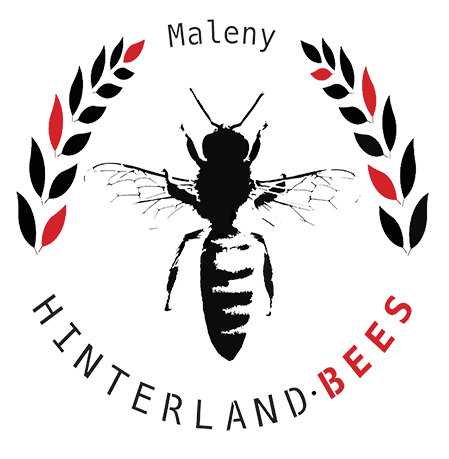Saving Bees from a Fallen Tre
Holy smokes, what a catastrophe! We were called in by the Sunshine Coast Council to rescue a beehive from the trunk of a massive Eucalypt that had fallen across one of their mountain bike tracks.
Our first task was to ascertain the size of the beehive inside the tree. The second task was to find out the damage sustained during the fall. Experience tells us that such falls are generally very traumatic for a beehive. The weight of honey usually forces the honeycombs to break, and they are often obliterated under the force of impact.
Brood comb is lighter and more robust and has a better chance of holding together; however, depending on its orientation, it can sandwich bees, including the queen. Because the queen is usually located in the middle of the brood nest, her chances of survival are slim.
By cutting a window into the log, we were able to see the extreme extent of the damage. To compound the destruction, Small Hive Bettles had overwhelmed what was left of the hive, destroying the brood sections and sliming-out the honey. What remained was heaving with SHB maggots. It soon became apparent that this operation was not about the relocation of a beehive, but about saving the surviving bees.
With all of the brood destroyed and virtually no prospect of finding a living queen, we needed the come up with an alternative plan to get the bees to move into their new home. While we could have used a frame of open brood from another colony as an attractant, this brood would have been extremely susceptible to attack from Small Hive Beetles that had flocked to the site.
We decided to use another small colony of bees, including their brood, honey, pollen and queen, to lure the bees out of the log. Generally speaking, combining two colonies of bees is a recipe for trouble, as they end up fighting for dominance, resulting in mass deaths.
A small or weakened colony, on the other hand, is much more likely to accept a boost to their workforce happily, and a queenless colony is much more likely to want to integrate with a queen-right colony. The idea came from having used small colonies in trap-out boxes, successfully in the past.
To hasten the process, we moved handfuls of bees from inside the log into the box with the other colony. Once a critical mass was in the box, the lingering bees started to move in by themselves, to join their sisters. By nightfall, all but a few stragglers had transitioned into their new home. The following evening, we were able to relocate the box to one of our apiaries, having cleared the log of bees.
